Statistically, you have a far greater chance of being injured while driving to the dive site than when you’re bobbing around in the water surrounded by hungry sharks. However, it doesn’t hurt to learn some basic shark diving etiquette in order to minimize the risks.
RULE #1 BLACK IS BACK
Sharks are attracted to bright colors. Most sharks are fish eaters and fish tend to be silvery, yellow or a variety of other iridescent colors. Fortunately, modern wetsuit makers favor black neoprene but fin, snorkel and mask manufacturers delight in making brightly hued accessories. Although you may look great in pink fins, think like a ninja if you’re attending a shark dive.
The same principle applies to exposed skin. Wear dark gloves to help the sharks distinguish between your hands and the bait.
RULE #2 GET AWAY FROM THE SURFACE
If you’re attending an organized shark feed, the sharks will likely hear the boat arriving and start circling long before the divers enter the water. In this case, it’s important to get underwater as soon as possible.
Objects floating at the surface tend to be either sick or dead animals or debris that host small fishes. All of these attract the attention of sharks.
If you have to stay on the surface, keep your head underwater at all times so that you can see what is approaching you from below.
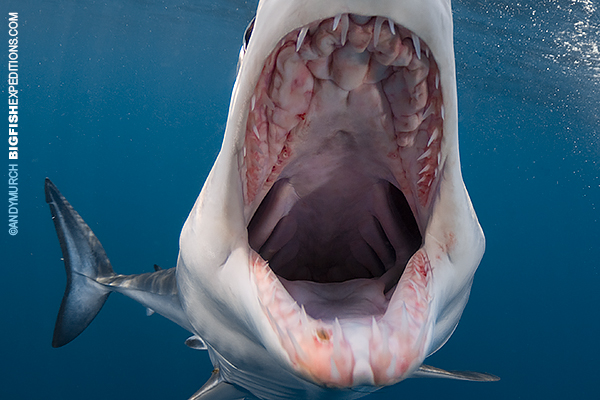
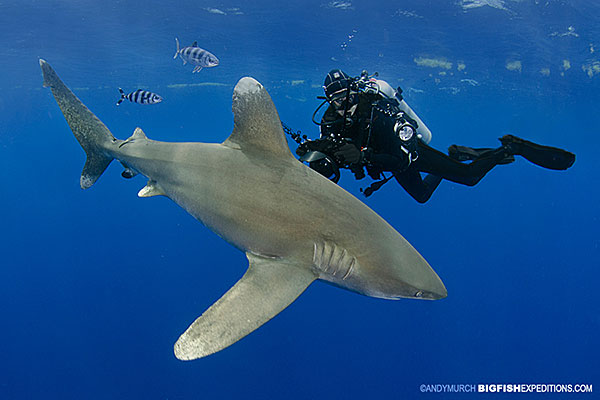
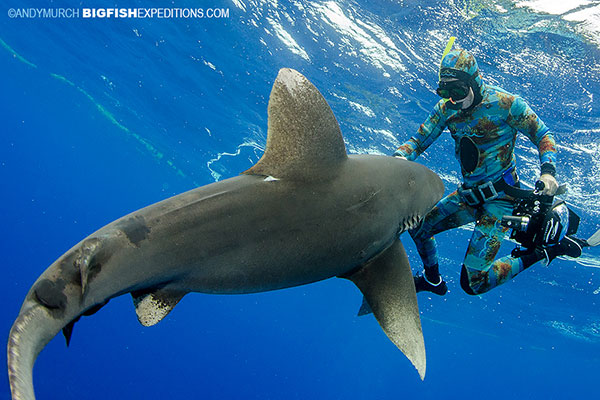



RULE #3 AVOID SHARK DIVING AT DUSK
Although shark diving operators entice sharks to feed during the day, many sharks naturally start hunting at dusk. Once the sun begins to sink towards the horizon many species become more alert and agitated as they prepare for their nightly hunt. Shark attacks are far more likely at this time so its a good idea to get out of the water at least an hour before sunset.
RULE #4 WATCH FOR WARNING SIGNS
Not all sharks give warnings before they attack but some do. Watch for agitated behavior in the form of fast bursts of speed, jerky movements, lowered pectoral fins and exaggerated side-to-side head movements. These all indicate that a shark is feeling stressed. If you encounter this no matter how subtle it may seem, slowly back away and stop doing any activity that may make the shark feel threatened.
RULE #5 BECOME ONE WITH THE REEF
Sharks respond to movement so it is a good idea to remain as still as possible.
Most shark feeds take place on the sea floor. Divers descend with a little more weight than they would normally wear so that they can kneel comfortably on the sand without bobbing around in the current or surge. Even better than sitting on the sand is to put your back against the reef but make sure you are not damaging any corals in the process.
In blue water feeds such as when chumming for oceanic whitetip sharks at Andros Island in the Bahamas, the seabed may be more than 1000m below you. In this case, it is important to maintain neutral buoyancy. Invariably, the diver that descends deepest, gets the most attention from the attending sharks.
RULE #6 MAINTAIN EYE CONTACT
White sharks, tiger sharks and many types of reef sharks hunt by sneaking up on their chosen prey. They will often only attack if they have the advantage of surprise so if you make it clear that you can see the sharks around you, you have less chance that they will think of you as potential prey.
RULE #7 NEVER CORNER A SHARK
If you see a shark in a cave or swimming close to a reef wall, avoid blocking its exit. A shark attack can take place simply because a shark is trying to escape but has nowhere to go except through the diver.
RULE #8 AVOID MURKY WATER
Diving in turbid water is asking for trouble. Not only is it harder to keep an eye on where the sharks are, they may have trouble differentiating between you and the food if their vision is obscured.
RULE #9 BRING A BIG STICK BUT DON’T USE IT
During a shark feed, its quite normal for the attending sharks to approach all of the divers to see if they have any food. More often than not, they pass nonchalantly by but sometimes they give divers a little bump with their noses to see what get dislodged or just to see what we’re all about – think of it as an exploratory prod from an animal that has no fingers.
If you are uncomfortable with this level of contact, bring along a short length of PVC pipe (or better still a big camera) and hold it in the direction of the shark as it approaches. This is usually enough of an incentive to make the shark turn long before it makes contact.
Never jab the shark with the pole as this could cause an aggressive response.
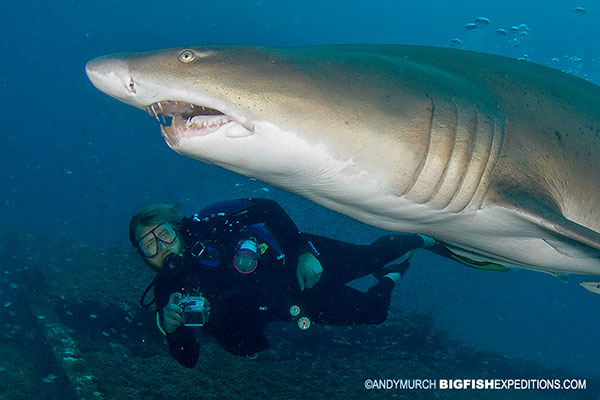


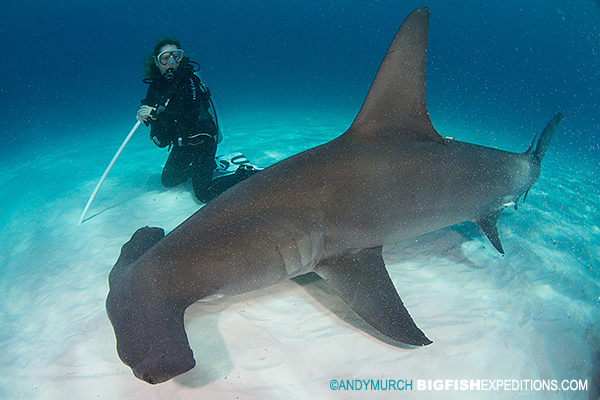

RULE #10 DON’T TRY THIS AT HOME
It may be tempting to throw a bag of chum in your boat and head out to sea on your own but without proper training and experience this is asking for trouble. Attracting sharks that are not used to being fed is more dangerous because they will be extremely unpredictable.
Always go shark diving with a reputable, experienced operator. Each encounter is different, with its own unique variables and potential risks. Rather than learning the hard way, join a trip with a company that has a track record of safe encounters.
Author: Andy Murch
Andy is a professional big animal photographer and the founder of BigFishExpeditions.com
Over the last two decades Andy has photographed more species of sharks than virtually anyone alive. His passion for sharks and their survival has led him to create the elasmodiver.com shark and ray field guide and PredatorsinPeril.org
